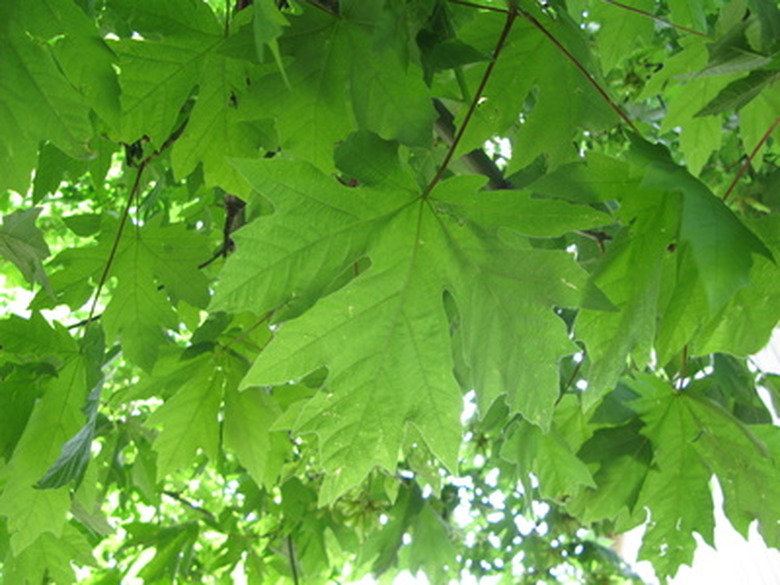California Tree Leaf Identification
With three major ecological zones ranging from temperate rain forest to desert, California is home to a rich assortment of trees. Observing leaves closely, with the help of a regional tree identification guidebook, is the most accurate way to identify a tree species.
Leaf Shape
Leaf shapes very widely among tree species. Western sycamore and bigleaf maple both have palmate leaves, shaped roughly like a human hand, with their lobes radiating from a central point. California black walnut leaves are an example of a compound leaf, meaning each leaf is a composite of multiple leaflets. Another common leaf shape is the lobed leaf, characterized by deep indentations that run from the leaf edge into the center; the California black oak has such leaves.
Leaf Margin
The edge of the leaf, also called the leaf margin, contains important leaf identification features. For example, the tanbark oak can be distinguished from the interior live oak in part by its toothed leaf margin. Smooth leaf margins like those of the Freemont silk tassel set this tree apart from its close relative, the coast silk tassel, whose leaves have a wavy margin. The hollyleaf cherry is an example of an extreme leaf margin; its edges contain sharp teeth known as spines.
- With three major ecological zones ranging from temperate rain forest to desert, California is home to a rich assortment of trees.
- Another common leaf shape is the lobed leaf, characterized by deep indentations that run from the leaf edge into the center; the California black oak has such leaves.
Deciduous or Evergreen
All trees fall into two main categories. Deciduous trees are those that lose their leaves each winter. Evergreen trees keep their leaves year-round and include broadleaf evergreens such as Pacific madrone, as well as conifers such as Jeffrey pine. Determining whether the leaf is deciduous or evergreen helps to narrow the field of possibilities. This is easy to do in the winter, when only evergreen plants will show leaves. In the summer, leaves that are thicker or more leathery feeling are most likely evergreen.
Needles
While we don't usually think of them as leaves, needles are the leaves of many types of conifers. The length, color and arrangement of needles can help you identify which tree they belong to. Lodgepole pines have short needles that grow in clusters of two, while their close relative the shore pine has longer, twisting needles that also grow in clusters of two.
- All trees fall into two main categories.
- This is easy to do in the winter, when only evergreen plants will show leaves.
Considerations
It can sometimes be difficult to identify collected leaves without knowing more about the plant they came from. Important things to record when making a collection include where the tree was growing (deep in the forest or in a sunny meadow) and how big it was. The arid-landscape-loving Western juniper would likely not be growing among rain-loving redwoods. Likewise, a mature black cottonwood would not be growing in the shrub-like clusters of silk tassel trees.
